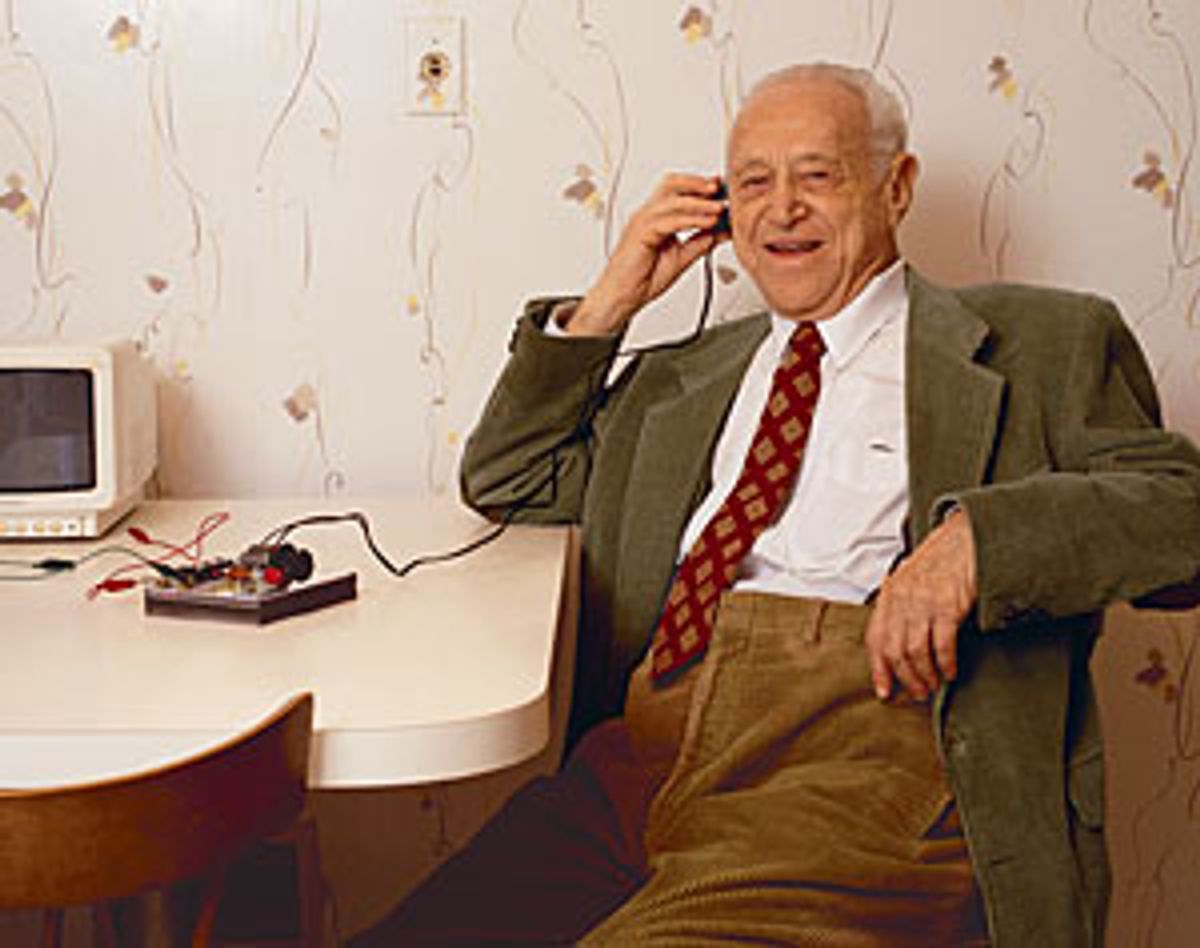Norman Krim, who died last week at the age of 98, was by all accounts a mensch, an all-around decent guy. This was evident to me back in 2003, the night the Raytheon archivist hosted me at his home in Newton, Mass. For hours he regaled me, over several cups of green tea, with the stories of his life and the dawning of the electronics era in the 30s and 40s. I was interviewing him for an article about the “irresistible transistor” that enabled the DIY electronics movement. The CK722 was made by Krim’s division at Raytheon in the early 1950s. These germanium junction transistors were intended for hearing aids. In fact, much of Krim’s career was spent creating and distributing the miniature vacuum tubes and later the transistors that were used in hearing aids.
As his tale unfolded, a portrait of Krim emerged as a Zelig-like figure in the history of electronics. He was a protégé of Raytheon co-founder Vannevar Bush. In 1947, Raytheon’s other co-founder, Laurence K. Marshall, took Krim with him to witness a demo at Bell Labs where a group led by William Shockley and Stanley Morgan and which included John Bardeen, Walter Brittain Brattain and others unveiled the point-contact transistor.
Four years later in the spring of 1951, Krim roomed with Shockley while both were serving on a military procurement advisory board.
“Shockley would be proofreading a paper after dinner every night. He told me, ‘I’m going to publish an article in the Physical Review, and you should remember, pick up that article.’ When I got a copy of his article on junction transistors, that was it for me. The light bulb went on.” Krim instantly recognized the wave of creative destruction rolling at him from the coming Transistor Age. Just weeks after his encounter with Shockley, Krim had his group at Raytheon cranking out germanium junction transistors.
As Krim’s group grappled with the difficulty of packaging these devices, they produced several batches of the transistors, labeled CK721s, that were not good enough for hearing aids. But instead of discarding thousands of them, Krim saw an opportunity to fire the imaginations of the next generation of EEs by making those not-quite-ready-for-prime-time transistors available, relabeled as CK722s, to young hobbyists eager to cut their teeth making the kinds of gadgets transistors enabled, such as radios, speakers and even Geiger counters. Many of those hobbyists went on to become engineers in the late 50s and early 60s. And they have Norm Krim to thank, even if none of them knew who he was until Jack Ward, curator of the Transistor Museum, dubbed him “The Father of the CK722” circa 2000.
Finally, consider that Krim’s only hiatus from his 75-year career at Raytheon was a brief stint as CEO of Radio Shack, which he sold to the Tandy Corporation in 1962. I don’t think it’s too much of a stretch to credit him with laying the groundwork for the DIY identity that long defined the Shack or the DIY movement now championed by our friends at Make Magazine. But whether Krim winds up in the pantheon of EE giants is of little real consequence to the generation of engineers he inspired (not to mention all the people who benefited from the hearing aids he helped produce over the years). Norm Krim was a mensch and he is missed.
Corrected on 12/30/11



